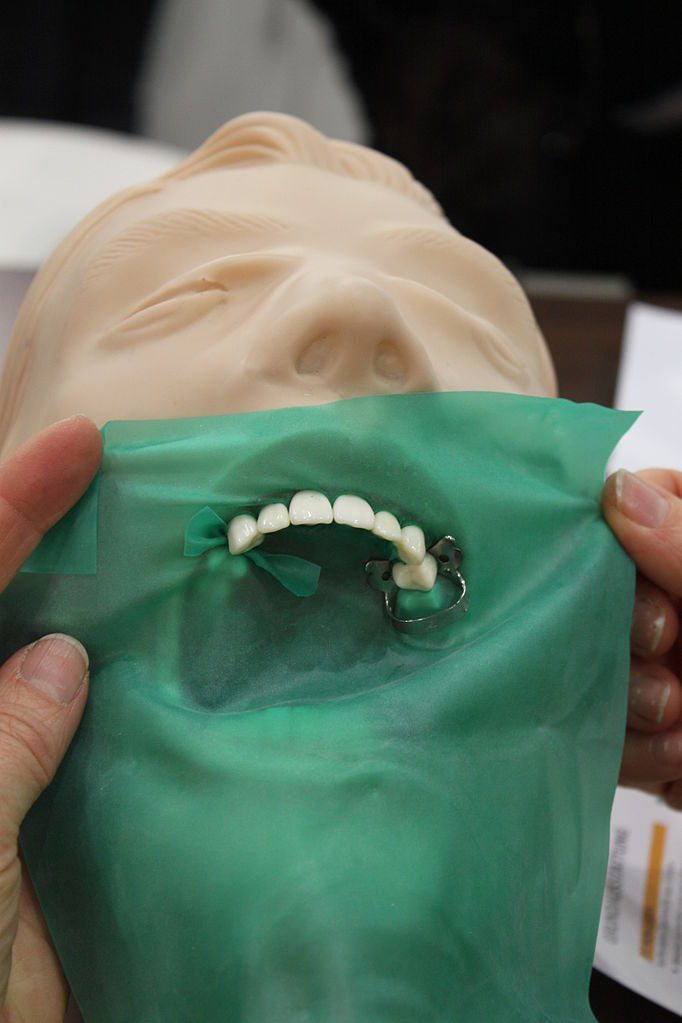What are dental dams? The latex sheets used during lesbian sex

If you like going down on women, dental dams are a good way to keep safe as they help stop the spread of a number of nasty infections.
These nifty squares of latex come in a variety of delicious-sounding flavours (anyone for “mint tingle“?) and have been promoted in safe sex campaigns for lesbian and bisexual women.
This is because, although the risk of getting an sexually transmitted infection (STI) from oral is lower than vaginal or anal sex, it can still happen.
But, as a Buzzfeed video showed in 2016, queer women have little idea what dental dams are (“like a dam…for you mouth?,” one asks) and don’t really use them (“I just can’t imagine being like, hold on babe, and like unravelling this,” says another).
So, what are dental dams? How do they help stop STIs spreading? What STIs are you at risk of catching if you don’t use dental dams?
And where can you get your hands on these latex gems?

Dental dams (Creative Commons)
What are dental dams?
A dental dam is a latex or polyurethane square, around 15cm by 15cm in size, which can be used to cover the anus or a woman’s genitals during oral sex.
According to the NHS, a dental dam “acts as a barrier to help prevent sexually transmitted infections passing from one person to another.”
Dental dams were originally made for dentistry, and are used to protect the mouth when work is being done on an isolated tooth. Thinner versions were later produced specifically for promoting safe oral sex.
Dams are often used in sexual health campaigns for women who have sex with women. Still, their purpose applies to anyone who likes to go down on women – or anybody into “rimming” (licking the anus).

No, not those dental dams… (Creative Commons)
Why should you use dental dams?
Despite what a lot of people say, oral sex without protection isn’t safe.
Going down on women or “rimming” without using protection can lead to a plethora of STIs including herpes, syphilis, chlamydia, gonorrhoea, HPV, and – in rare cases – even HIV.
“There is a common misconception that oral sex is ‘safe’,” explains Simone Taylor, who is education and regional lead at Brook, a sexual health charity for young people.
“But while you can’t get pregnant from oral sex, you can still catch STIs.”
In 2008, Stonewall published findings of a study into the health of 6,000 lesbian and bisexual women, which revealed half of those who had been screened had an STI.
And a quarter of those with STIs had only had sex with women in the last five years.
Dental dams should be used whenever you sleep with a woman you don’t know the STI status of, and until you know you are both in the clear.
Dams should also be used to prevent the spread of recurring STIs, such as herpes.

Always use protection (Netflix/screen grab)
How do you use dental dams?
Before you do anything, check that the dental dam hasn’t passed its expiry date as printed on the packaging.
The dam should then be held in place, using both hands, on the vagina or anus before any oral contact.
Once you’ve started, don’t turn the dam over and, whatever you do, don’t move the dam from vagina to anus or vice-versa.
As Bekki Burbidge, deputy chief executive for the sexual health charity FPA, explains: “Avoid moving a dam from the anus to the vulva because bacteria that live harmlessly in the anus can cause infection in the vagina.”
A dental dam is for single use only, so make sure you throw it away afterwards and use a new one every time.
To enhance her sensations, you can use a water-based lubricant on the side of the dam touching the vagina.
“Try experimenting with adding lube between you and the dam, and try out different flavoured dams, to find what you enjoy the most,” Burbidge adds.
“Only use water-based or silicone-based lubes with latex dams – oil-based lubes can damage latex. If your dam is made of polyurethane then it’s also safe to oil-based lube.”
Where can you buy dental dams?
In the UK, dental dams can be found in some pharmacies or on online shopping sites like Amazon, which sells packs of four by brands like GLYDE and Pasante.
Prices range from £4.99 to £10.89. They come in a variety of flavours – because latex isn’t renowned for its tastiness – including strawberry, mint, banana, and vanilla.
Dams are also available for free in some genitourinary (GUM) and sexual health clinics.
But, as Taylor admits: “Dental dams are not always easy to get hold of”. She adds that, if you are under 25, you can get dams free from some Brook services.
If you are buying dental dams in Britain, Taylor also advises to get ones with a European CE mark.
In the US, dental dams can be bought in high street pharmacies like Walgreens and CVS Pharmacy, as well as online on Amazon or sites like Undercover Condoms, which sells popular brand Line One Labs.
Make sure they are FDA approved.

Dental dams (Line One Labs)
Can you make your own dental dams?
Yep – and it’s much cheaper. You can make a DIY dental dam using a condom.
Just cut the tip of the top of a condom, then cut the rim off the base, and cut through it once lengthways.
You should end up with a rectangular piece of latex, ideal for doing the dirty. Viola!

How to make your own dental dam using a condom (Creative Commons)
Does anyone actually use them?
Research suggests that in reality, few lesbian and bisexual women use dental dams.
In 2004, a study of 330 lesbian and bisexual women in Australia revealed that just 9.7% had used a dental dam – and only 2.1% had one regularly.
But that doesn’t mean dental dams shouldn’t be used – healthcare professionals and bodies like the NHS advise the use of dental dams during oral sex to help avoid the spread of STIs.
“Safe oral sex isn’t discussed as frequently as it should be, and young people are not as aware of dental dams as they are of condoms,” says Taylor.
Other tips for having safe sex with women
The NHS has a handy few tips for safe sex with women.
These include using a condom on sex toys, and washing toys with soap and water for before and after each session.
Other good pointers from the health body are to wash hands before and after sex, as well as to wear latex gloves and use a water-base lubricant for vaginal and anal fisting.
For more information, head to the NHS’s website, where you’ll find details of the STIs you can catch by having unsafe sex with women, and the symptoms to look out for.

